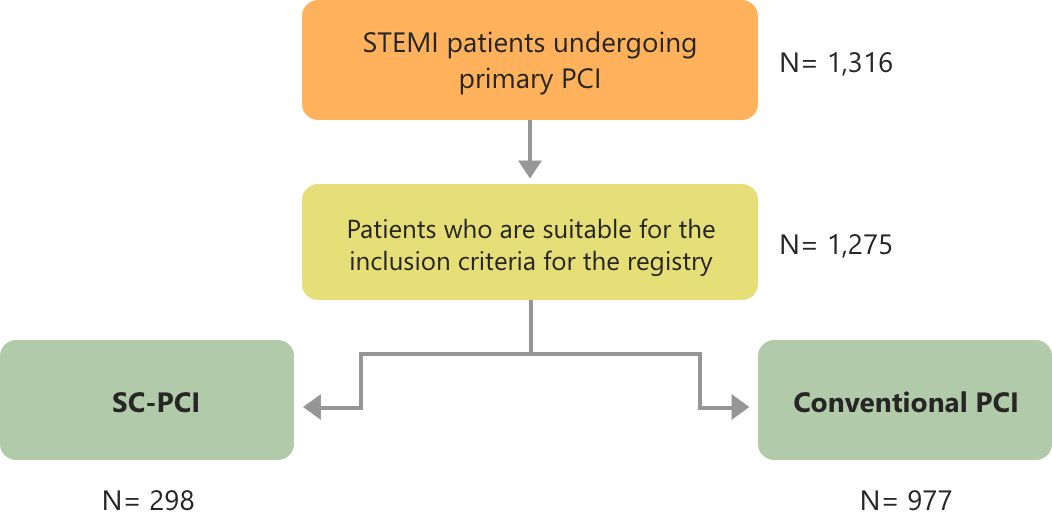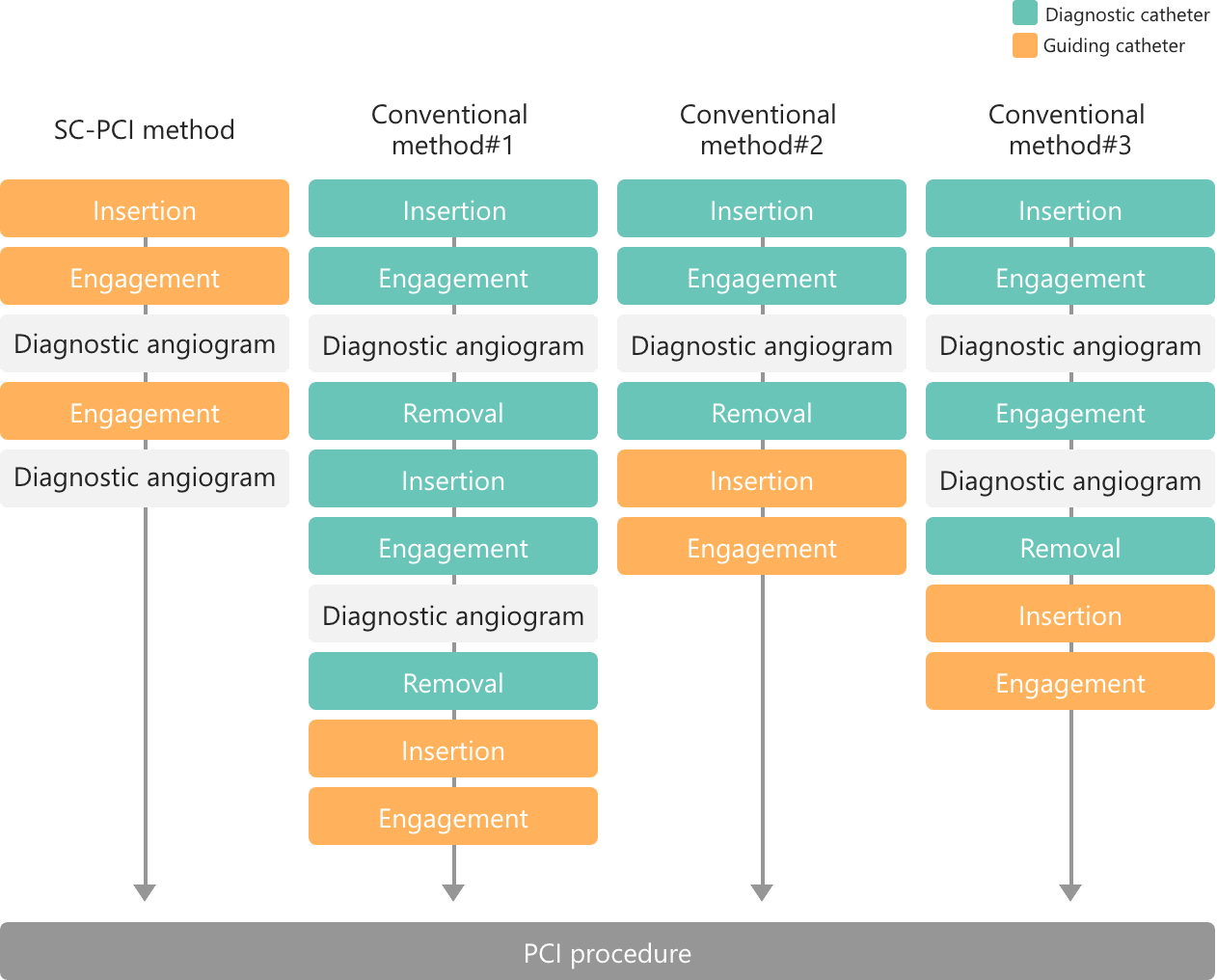Door-to-Balloon Time Reduction for STEMI Patients
Overview
The objective of this study is to confirm reduction of door-to-balloon (D2B) time with single-catheter percutaneous coronary intervention (SC-PCI) method.
Ikari left curve was reported as a universal guiding catheter for left and right coronary arteries. Several procedure steps can be skipped by SC-PCI method as the advantage of a universal catheter.
What is door-to-balloon (D2B) time?
The door-to-balloon time is defined as the time between the patient's arrival in the emergency department and first device activation such as a balloon, aspiration catheter, excimer laser catheter, and radiation exposure dose.
Background
Reduction of total ischemic time is important in the emergency treatment of ST‐elevation myocardial infarction (STEMI). There have been no established methods in primary percutaneous coronary intervention (PCI) to shorten ischemic time via radial access. Ikari left curve was reported as a universal guiding catheter for left and right coronary arteries. Several procedure steps can be skipped by SC‐PCI method as the advantage of a universal catheter.
Study Design
| Enrollment | 1,316 consecutive STEMI patients |
|---|---|
| Number of facility | 14 hospitals |
| Interventional Model Description | Patients were divided into two groups, single-catheter percutaneous coronary intervention method (SC-PCI) and conventional PCI method. |
| Primary endpoint | Door-to-balloon (D2B) time Radiation exposure dose |
| Term of study | January 2014 to January 2018 |

Primary Endpoint
The primary endpoints were door-to-balloon (D2B) time, defined as the time between the patient's arrival in the emergency department and first device activation such as a balloon, aspiration catheter, excimer laser catheter, and radiation exposure dose.
Study Outline
Material and Method
In the SC-PCI method, the Ikari left guiding catheter is used not only for diagnostic coronary angiography of both left and right coronary arteries but also for the guiding catheter of primary PCI. First, the non-culprit coronary artery's angiography, which was predicted with electrocardiogram and another non-invasive diagnostic method, was performed. Afterward, the guiding catheter was disengaged from the non-culprit coronary artery and directly engaged to the culprit. Then, the PCI procedure could begin immediately after diagnostic angiography.
The SC-PCI method using the Ikari left guiding catheter allowed operators to skip five steps, two steps or three steps compared with conventional method #1, #2 or #3. In this study, conventional method #1 was mostly used.

#1:Using the Judkins R and Judkins L diagnostic catheters.
#2:Using a diagnostic catheter to contrast the contralateral side of the culprit artery and a guiding catheter to contrast the culprit artery.
#3:Using a universal diagnostic catheter (TIG, Mitsudo etc.) to contrast both sides and then change to a guiding catheter.
Result
Door-to-balloon (D2B) time
The mean age was 68 ± 13 years old. Radial access was used in 85% of participants. PCI success was achieved in 99.5% of participants and the SC-PCI method was successfully performed in 92.6%. The door-to-balloon (D2B) time was shorter (68 ± 46 vs. 74 ± 50 min, respectively; p = 0.02), and the radiation exposure dose was lower (1,664 ± 970 vs. 2008 ± 1,605 mGy, respectively; p <0.0001) in the SC-PCI group than in the conventional group.

SC-PCI: single catheter primary percutaneous coronary intervention
D2S Time: door-to-sheath time S2B
Time: sheath-to-balloon time
Radiation exposure dose and fluorescent time



